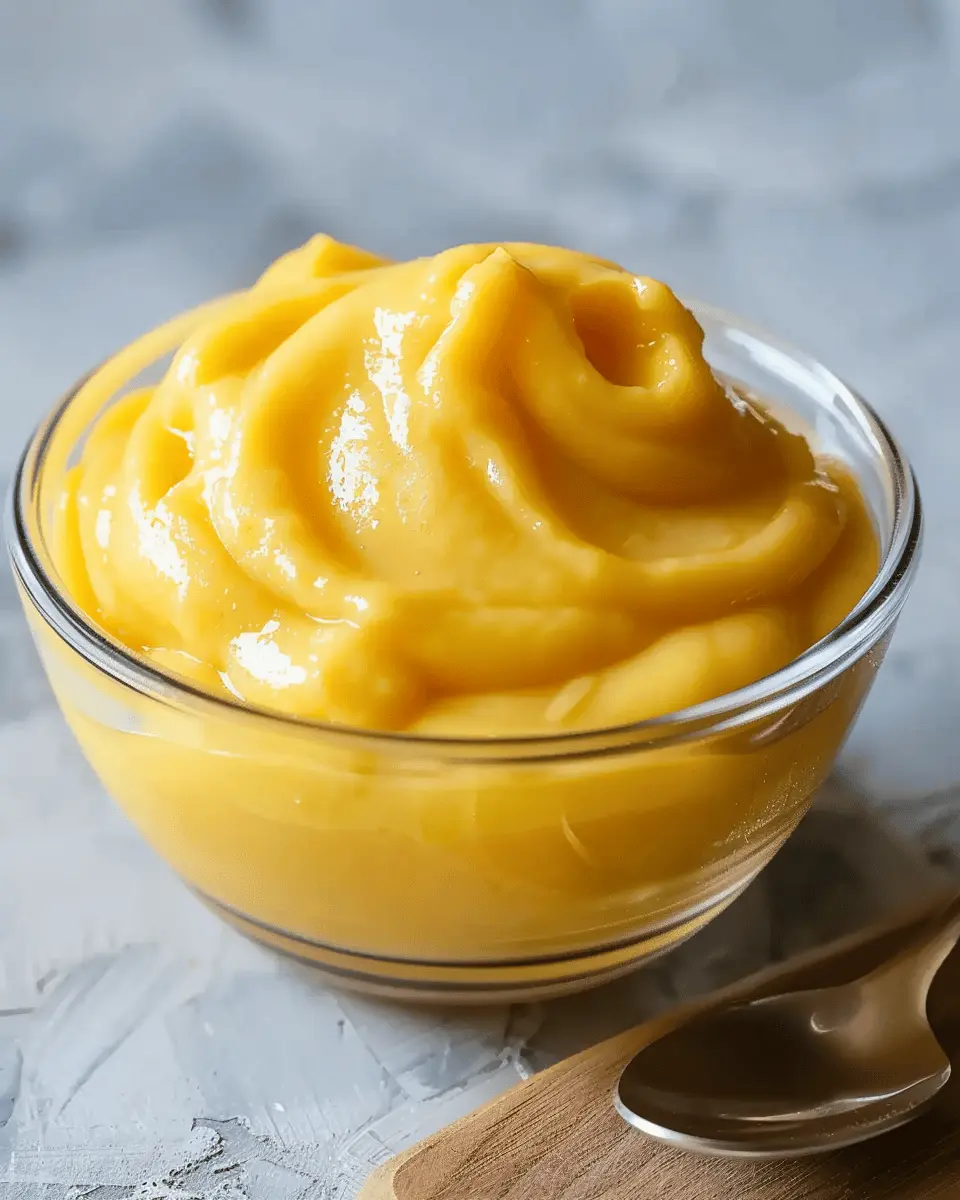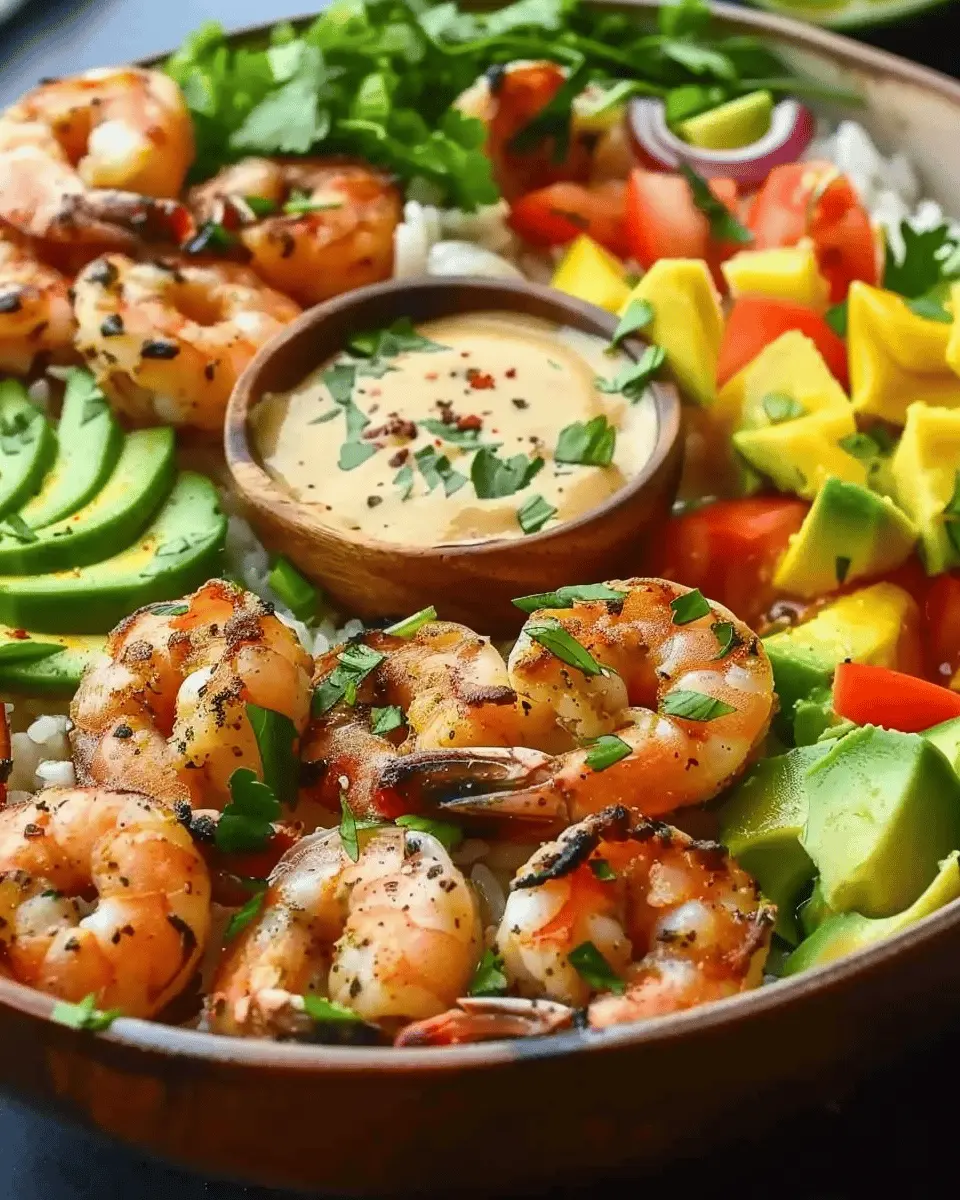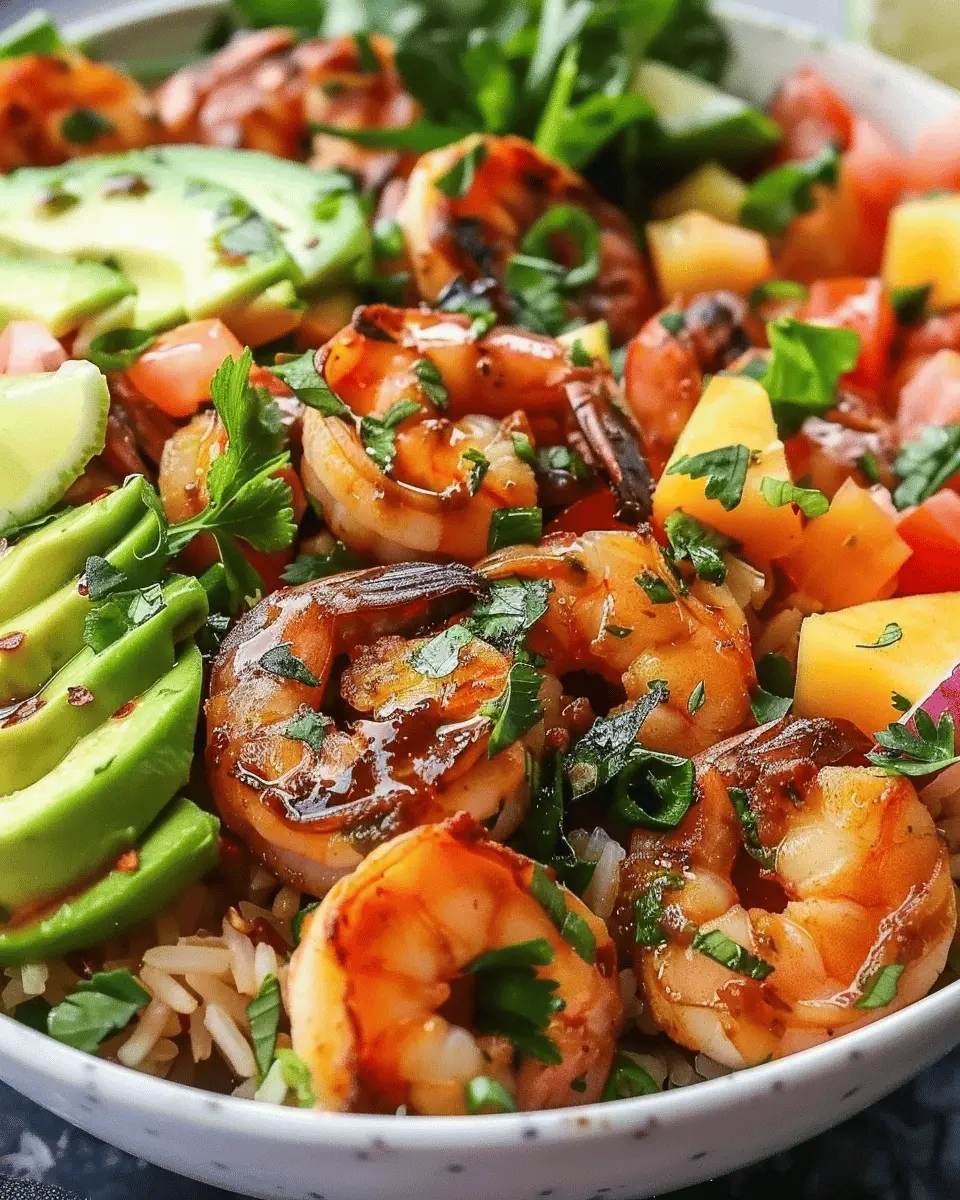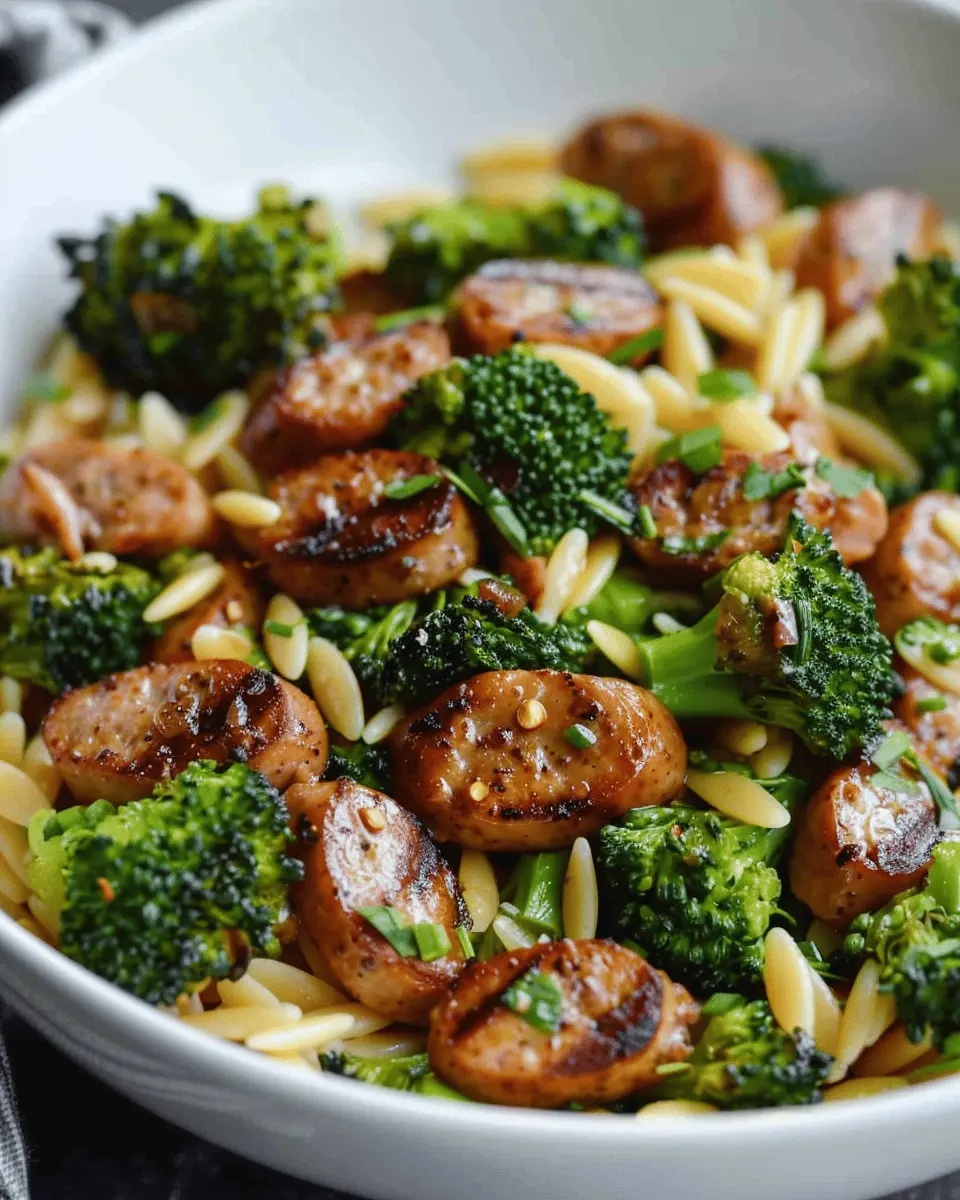Introduction to Jjamppong Recipe
Why Jjamppong is the Ultimate Comfort Food
If you’re on the hunt for that perfect bowl of comfort, look no further than jjamppong. This spicy Korean seafood noodle soup is not just a treat for your taste buds—it’s a complete sensory experience! With its vibrant colors, aromatic broth, and an abundance of flavors, jjamppong serves as a warm and hearty meal that satisfies both the body and soul.
Traditionally, jjamppong showcases a medley of seafood alongside chewy noodles and a spicy broth brimming with umami. But what makes this dish truly special is its versatility. Vegetarian versions are just as popular, using ingredients like mushrooms and tofu, while meat lovers often include a mix of proteins. Imagine diving into a steaming bowl after a long day, the spicy aroma wafting up as the sun dips below the horizon—doesn’t that sound inviting?
Another appealing aspect of jjamppong is how customizable it is. You can easily adapt the recipe to suit whatever ingredients you have on hand. From turkey bacon to chicken ham and a slew of vegetables, like bok choy or zucchini, you can let your creativity shine. As you stir in the flavor-packed broth, you can almost feel the warmth wrapping around you, a gentle embrace after a tough day.
In fact, a simple search can reveal that dishes like jjamppong have deep roots in Korean culinary traditions. Per the Korean Food Promotion Institute, the vibrant flavors often come from stock simmered with dried seafood, which is rich in nutrients. This emphasis on wholesome ingredients makes jjamppong not only delicious but also nutritious.
So, if you’re a young professional juggling work and life, and you crave a dish that brings comfort and joy while being easy to make, this jjamppong recipe is made for you. You’ll whip it up in no time, and every slurp will remind you that the simple things in life can bring the greatest pleasure.
Let’s dive into the spicy world of jjamppong and discover how you can make this ultimate comfort food in your own kitchen!
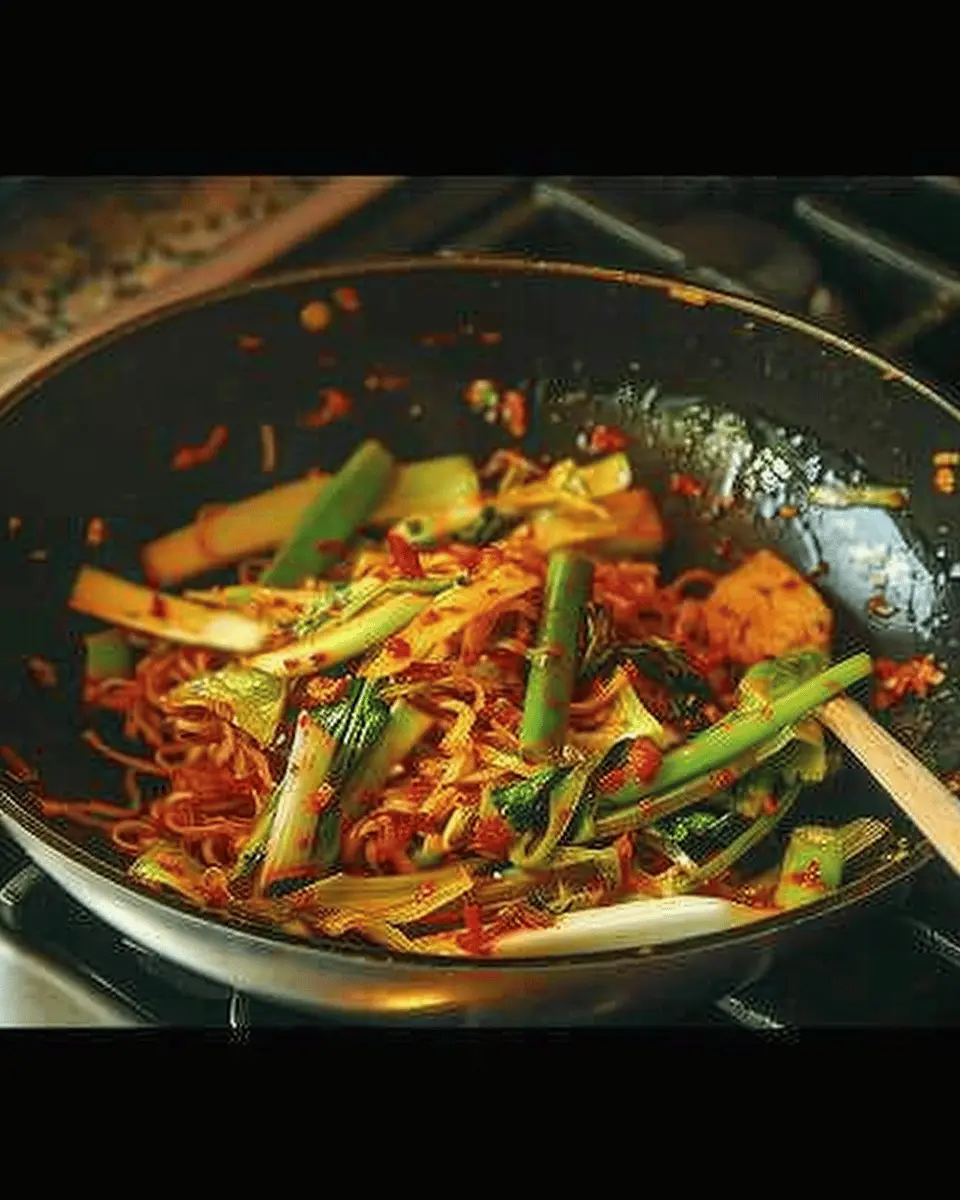
Ingredients for Jjamppong
Essential ingredients for the perfect Jjamppong
When diving into a delicious jjamppong recipe, it’s all about the right balance of flavors and textures. Here are the essentials you need:
- Noodles: Opt for thick wheat noodles to soak up the bold broth.
- Seafood: A mix of shrimp, clams, and squid adds depth; feel free to use frozen options if fresh isn’t available.
- Vegetables: Carrots, zucchini, and napa cabbage bring vibrant color and nutrients to the dish.
- Broth: Use chicken or seafood stock for a base that packs a punch.
- Spices: A good amount of Korean red pepper flakes (gochugaru) is vital for that signature heat.
Optional ingredients to customize your dish
Want to make your jjamppong even more personal? Consider adding:
- Turkey Bacon or Chicken Ham: For a unique twist and added protein.
- Tofu: A great plant-based option for a heartier feel.
- Corn or mushrooms: For a touch of sweetness and earthiness.
- Herbs: A sprinkle of green onions or cilantro brightens the overall flavor.
With these ingredients, you’ll whip up a bowl of jjamppong that’s not just a meal, but a delightful experience. Want to explore more Korean cooking? Check out Korean Food Foundation for tips and recipes!
Preparing Jjamppong
Getting ready to whip up a delicious bowl of jjamppong can be both exciting and straightforward, even for busy young professionals. This Korean spicy seafood noodle soup is all about vibrant flavors and textures. Let’s dive into the preparation process together by breaking it down step by step. Trust me, you’ll have a mouthwatering dish in no time!
Gather and Prep Your Ingredients
First things first, gather all the necessary ingredients. Here’s what you’ll need:
- Noodles: Go for thick wheat noodles or even udon to add that chewy texture.
- Vegetables: Onions, garlic, carrots, bell peppers, and zucchini are fantastic choices.
- Protein: Use a mix of beef, turkey bacon, and chicken ham for a rich flavor profile.
- Seafood: Shrimp, mussels, or any variety of seafood you prefer work wonders in this dish.
- Broth ingredients: You’ll need vegetable or seafood stock, as well as chili powder for that signature kick.
Quick tip: Prepping your ingredients ahead of time can save you stress later. Chop your veggies and organize your proteins; it’s amazing how much smoother the cooking process will go. If you’re unsure about ingredient quality, check out the USDA guidelines for more insights.
Cook the Vegetables and Aromatics
Now that you have everything ready, let’s heat things up a bit! Begin by warming some oil in a large pot over medium heat. Once it’s hot, add in the chopped onions and minced garlic. Sauté them until aromatic—this is where the magic begins.
Next, toss in your other vegetables. Carrots, bell peppers, and zucchini should be added in order of cooking times; start with the ones that take longer to cook. Stir them gently until they’re slightly softened. This step will not only enhance the flavors but also give your jjamppong recipe a lovely texture.
Prepare the Broth Base
With your aromatics and veggies sizzling, it’s time to create the delightful broth that will elevate your jjamppong. Add your vegetable or seafood stock to the pot and bring it to a gentle simmer. Remember to season the broth with a little salt, pepper, and, of course, the key ingredient—chili powder. This blend will give your soup that signature spicy kick. Adjust the spiciness to your palate; after all, you’re the chef here!
Give your broth some time to develop its flavors—about 10-15 minutes should do the trick. Feel free to taste it and tweak the seasonings. If it feels too intense, a dash of coconut milk can mellow things out while adding a creamy touch.
Cook the Noodles
While the broth simmers to perfection, let’s focus on those delicious noodles. If you’re using freshly made noodles, they generally only require a few minutes to cook. If you decide on dry noodles, cook them according to package instructions, but aim for slightly undercooked, as they’ll continue to cook when added to the broth.
Once they’re ready, drain them and set them aside. This component adds a satisfying chew to your jjamppong, making each bite delightful!
Combine Everything in One Pot
Now comes the fun part! Add your seafood and cooked proteins—beef, turkey bacon, and chicken ham—to the simmering broth, followed by the cooked noodles. Stir everything together gently, allowing the noodles and proteins to soak in all that amazing flavor.
Let it all simmer together for another few minutes until everything is hot and the seafood cooks through perfectly. Finally, garnish with some chopped green onions or fresh cilantro if you like. And voilà, you have a stunning bowl of jjamppong that’s begging to be devoured!
So there you have it, a friendly guide to preparing this flavor-packed dish. Your cozy evening just became a culinary adventure, and with every sip, you’ll feel the warmth of home. Happy cooking!
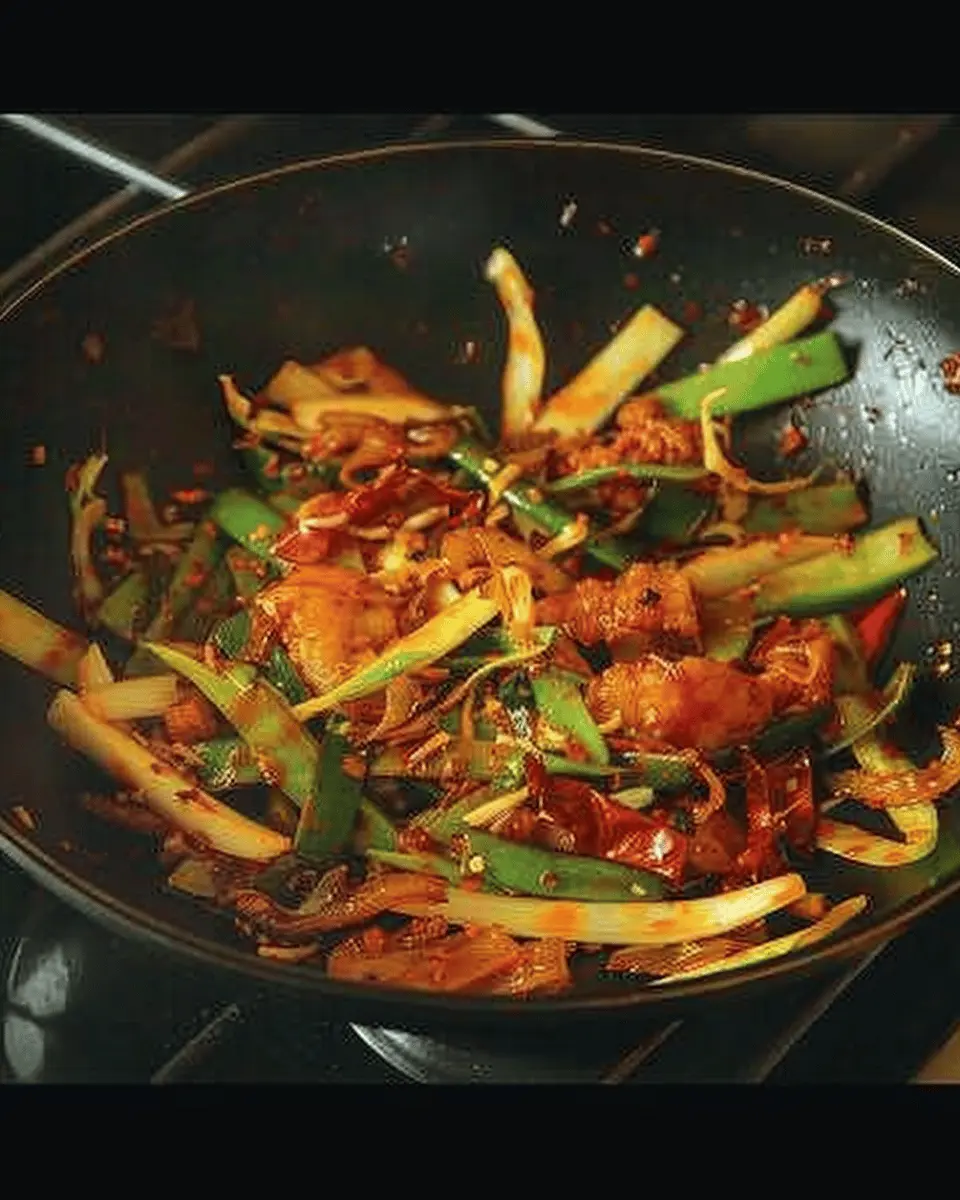
Variations on Jjamppong
Jjamppong offers endless possibilities, making it a favorite for culinary experimentation. Whether you’re a seafood lover, a vegetarian, or someone who craves spice, there’s a jjamppong recipe out there just for you!
Seafood Jjamppong: A Twist with Fresh Fish and Shrimp
If you’re drawn to the ocean’s bounty, Seafood Jjamppong is your go-to. Picture this: a steaming bowl filled with plump shrimp, tender calamari, and slices of fresh fish like mackerel or red snapper. Not only does this version deliver a delightful burst of flavors, but it also adds an impressive protein kick. To make this dish even more vibrant, toss in some seasonal veggies like bok choy and mushrooms. You can find tips on selecting the freshest seafood in this guide on Seafood Sustainability.
Vegetarian Jjamppong: Delicious Without the Meat
Who says you need meat to enjoy great flavors? In this vegetarian version, replace meat with hearty tofu and load the soup with a variety of colorful vegetables—think zucchini, bell peppers, and carrots. The secret? A rich, umami-packed broth that makes every slurp satisfying. You can enhance the flavor with seaweed or miso, offering a delightful depth of taste that even the most die-hard carnivores may find irresistible!
Spicy Jjamppong: For Those Who Love a Kick
For the spice enthusiasts among us, Spicy Jjamppong is a must-try. Just add more gochugaru (Korean chili flakes) or fresh chili peppers to your broth to ignite your taste buds. You can even play with the heat levels to find the perfect balance for your preference. Paired with a side of kimchi, this version promises to wake up your senses and leave you eager for more.
No matter which variation you choose, each jjamppong recipe brings its own flair to the table, making it an inviting dish for any occasion!
Cooking Tips and Notes for Jjamppong
Key Tips for Enhancing Flavors
When preparing your jjamppong recipe, flavor layers are everything. Here are some excellent tips to elevate your dish:
- Use a rich broth: Start with a quality seafood or vegetable stock. You can even make your own using simmered shrimp shells and vegetables. This adds depth to your soup.
- Fresh ingredients matter: The better your vegetables and seafood, the tastier your jjamppong will be. Consider adding fresh clams or squid for that authentic touch.
- Seasoning is key: Don’t overlook salt and pepper! A dash of soy sauce can also boost flavor.
Common Mistakes to Avoid
Navigating to jjamppong perfection can be tricky. Here are some common pitfalls:
- Overcooking the seafood: Add seafood towards the end of cooking to prevent it from becoming rubbery.
- Using dry noodles: If you’re not careful, your noodles can become mushy. Make sure to cook them separately and rinse under cold water before adding them to the soup.
- Ignoring spice: A typical jjamppong is known for its heat. Experiment with gochugaru or chili oil until you find your perfect spice level.
For additional variations, check out Serious Eats for more tips on Asian noodle dishes. Enjoy cooking your delicious bowl of jjamppong!
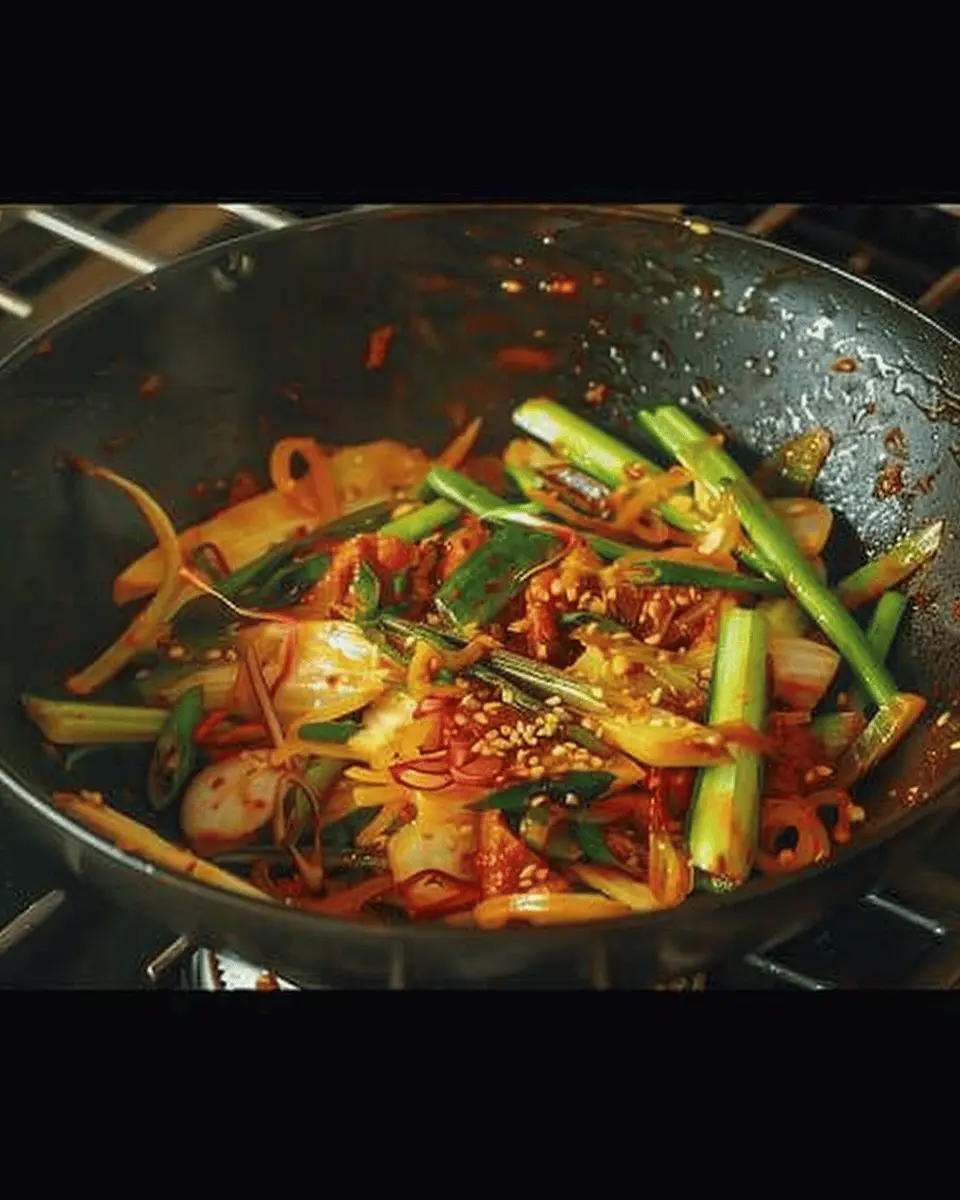
Serving Suggestions for Jjamppong
What to Pair with Your Jjamppong
Jjamppong, a spicy Korean seafood noodle soup, is a delightful dish that can be enhanced with the right accompaniments. Consider serving it with:
- Fresh Salad: A light, tangy cucumber salad can help balance the rich flavors.
- Korean Pancakes: Also known as Pajeon, these savory pancakes made with green onions are a fantastic pairing for that extra crunch.
- Kimchi: This traditional side dish adds fermented goodness and a touch of heat, complementing the soup perfectly.
- Turkey Bacon or Chicken Ham: If you want to add protein without overwhelming the dish, these savory options work beautifully.
Creative Serving Ideas
While enjoying your jjamppong recipe, think outside the bowl! Presenting the dish in unique ways can elevate your dining experience. Here are some suggestions:
- Personal Bowls: Serve each portion in colorful individual bowls to create a whimsical dining atmosphere.
- Garnish: Top with sesame seeds or fresh herbs like cilantro for an aromatic finish.
- Family Style: Offer a big, shared pot on the table with sides like steamed rice or pickled vegetables to allow everyone to customize their meal.
For more tips on Korean cuisine and exciting serving options, check out Maangchi, an expert in authentic Korean recipes. Get ready to impress your friends with your culinary skills!
Time Breakdown for Jjamppong
Preparation time
Getting started on this delicious jjamppong recipe is half the fun. You’ll want to allow about 15-20 minutes to gather and chop your ingredients. This will make the cooking process flow smoother, and it’s a great way to get your kitchen prepped for the exciting adventure ahead!
Cooking time
Once you’re armed with all your ingredients, the actual cooking takes about 25-30 minutes. It’s surprising how quickly things come together once you hit the stove. The aroma of the spices combines with the seafood, making your kitchen smell divine!
Total time
When you add it all up, you’re looking at a total time of around 40-50 minutes for this jjamppong masterpiece. That’s a quick meal option that’s perfect for busy weeknights! So, whether you’re cooking for yourself or impressing a friend, this is a dish that won’t keep you in the kitchen all evening.
Ready to dive in? Let’s get cooking! For a few helpful tips on cooking techniques, check out resources like Serious Eats or The Kitchn.
Nutritional Facts for Jjamppong
Estimated calories per serving
A typical serving of jjamppong contains approximately 400-500 calories, making it a hearty meal that nourishes without overwhelming your daily intake. This balance makes it a great option for a filling dinner after a long day at work.
Protein and nutrient content
This delicious noodle soup shines in its nutritional profile. A single serving of jjamppong packs around 20 grams of protein, thanks to the beef and seafood. You’ll also enjoy a dose of vitamins and minerals from the variety of vegetables included, such as bok choy and mushrooms. For a deeper dive into nutrient breakdowns, resources like the USDA FoodData Central can be really enlightening.
Sodium levels
While enjoying your jjamppong recipe, it’s important to be mindful of sodium levels. A serving typically has around 800-1,000 mg of sodium, largely due to the broth and seasoning. If you’re watching your sodium intake, consider using low-sodium broth or reducing the added salt. You would be surprised how flavorful your jjamppong can still be with just a little tweaking!
For more on healthful eating, check out the American Heart Association for tips on managing sodium in your diet.
FAQs about Jjamppong
Can I make Jjamppong vegetarian?
Absolutely! Making a vegetarian version of jjamppong is not only simple, but it allows you to enjoy this delicious dish without meat. Just swap out the proteins like turkey bacon or chicken ham for a medley of your favorite veggies and plant-based proteins. Think tofu, mushrooms, broccoli, and bell peppers to add depth and texture. You might also consider opting for a vegetable broth instead of the traditional seafood or meat broth, ensuring the flavors meld beautifully.
What type of noodles are best for Jjamppong?
When it comes to noodles, you can’t go wrong with wheat noodles, which often have the right thickness and chewiness to complement the dish. The classic choice is ramyeon noodles, as they soak up the broth wonderfully. Alternatively, you could try udon for a thicker texture or rice noodles for a gluten-free option. Keep in mind that the choice of noodles can significantly influence the overall experience, so pick based on your preference!
How can I adjust the spice level in Jjamppong?
Looking to dial up or down the heat in your jjamppong recipe? It’s all about balance! Start with a base of gochugaru (Korean red pepper flakes)—you can control the spice by adjusting the quantity. For a milder flavor, add a little less, or try a splash of coconut or almond milk to tone it down. If you crave extra heat, a few slices of fresh chili or a dash of spicy sauce can elevate the dish without overwhelming it. Experimenting is half the fun!
For more tips and authentic recipes, explore Korean Bapsang or check out Maangchi.
Conclusion on Jjamppong
Why you should try making Jjamppong at home
Making Jjamppong at home is not just about preparing a meal; it’s an experience! The rich, spicy broth filled with fresh seafood and vegetables will take your taste buds on a delightful journey. The beauty of this Jjamppong recipe is its flexibility—feel free to customize it with your favorite ingredients, like Turkey Bacon or Chicken Ham. Plus, cooking it yourself means you control the flavors and spice level, perfect for those who love a little zing.
Why not impress your friends or enjoy a cozy dinner with loved ones? Dive into this culinary adventure and savor every warm, comforting bowl! You won’t regret it. For more seasoning tips, check out this seasoning guide.
PrintJjamppong Recipe: Easy Spicy Noodle Delight with Turkey Bacon
A delicious and easy-to-make recipe for Jjamppong, a spicy Korean noodle soup, featuring turkey bacon for a lighter twist.
- Prep Time: 15 minutes
- Cook Time: 20 minutes
- Total Time: 35 minutes
- Yield: 4 servings 1x
- Category: Soup
- Method: Stovetop
- Cuisine: Korean
- Diet: Non-Vegetarian
Ingredients
- 200 grams noodles
- 4 slices turkey bacon
- 1 tablespoon vegetable oil
- 2 cloves garlic, minced
- 1 onion, sliced
- 1 carrot, julienned
- 1 zucchini, sliced
- 4 cups vegetable broth
- 2 tablespoons gochugaru (Korean chili flakes)
- 1 tablespoon soy sauce
- 1 green onion, chopped
Instructions
- Cook the noodles according to package instructions, then drain and set aside.
- In a large pot, heat the vegetable oil over medium heat. Add the turkey bacon and cook until crispy.
- Add the garlic and onion, sautéing until fragrant.
- Stir in the carrot and zucchini, cooking for a few minutes until they soften.
- Pour in the vegetable broth and bring to a boil.
- Stir in the gochugaru and soy sauce, simmer for about 5 minutes.
- Add the cooked noodles to the pot and combine well.
- Garnish with chopped green onions before serving.
Notes
- For a vegetarian version, substitute turkey bacon with tofu or omit it altogether.
- Adjust the spiciness by adding more or less gochugaru to taste.
Nutrition
- Serving Size: 1 bowl
- Calories: 380
- Sugar: 4 grams
- Sodium: 900 milligrams
- Fat: 10 grams
- Saturated Fat: 3 grams
- Unsaturated Fat: 5 grams
- Trans Fat: 0 grams
- Carbohydrates: 60 grams
- Fiber: 3 grams
- Protein: 20 grams
- Cholesterol: 25 milligrams
Keywords: Jjamppong, spicy noodle soup, turkey bacon, Korean food





